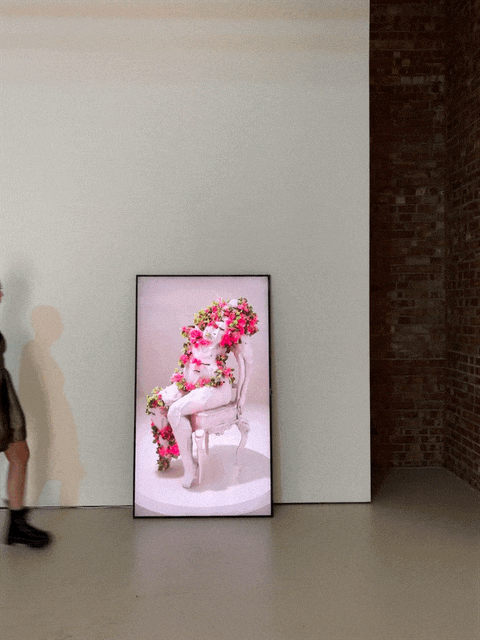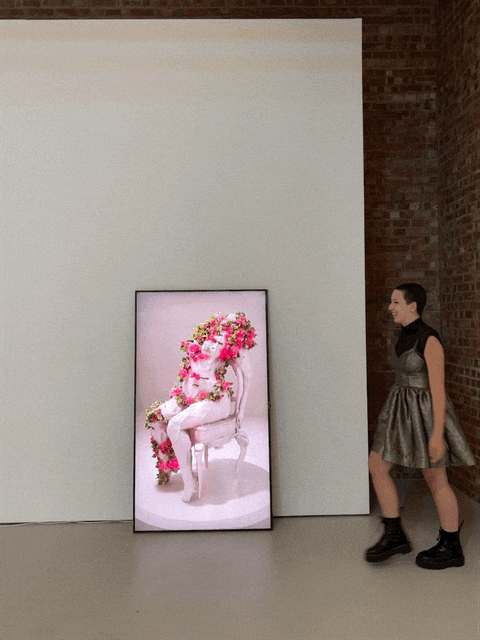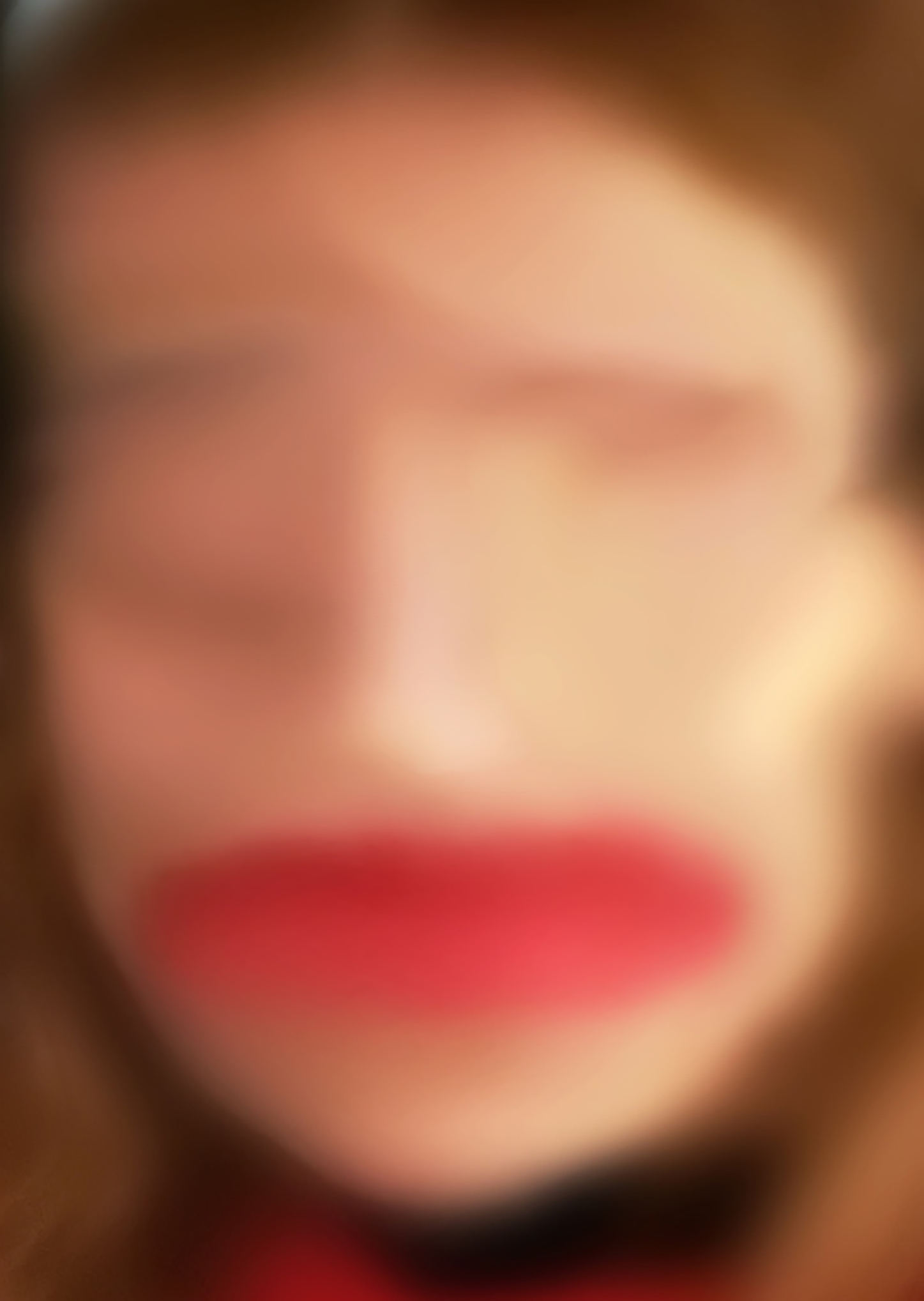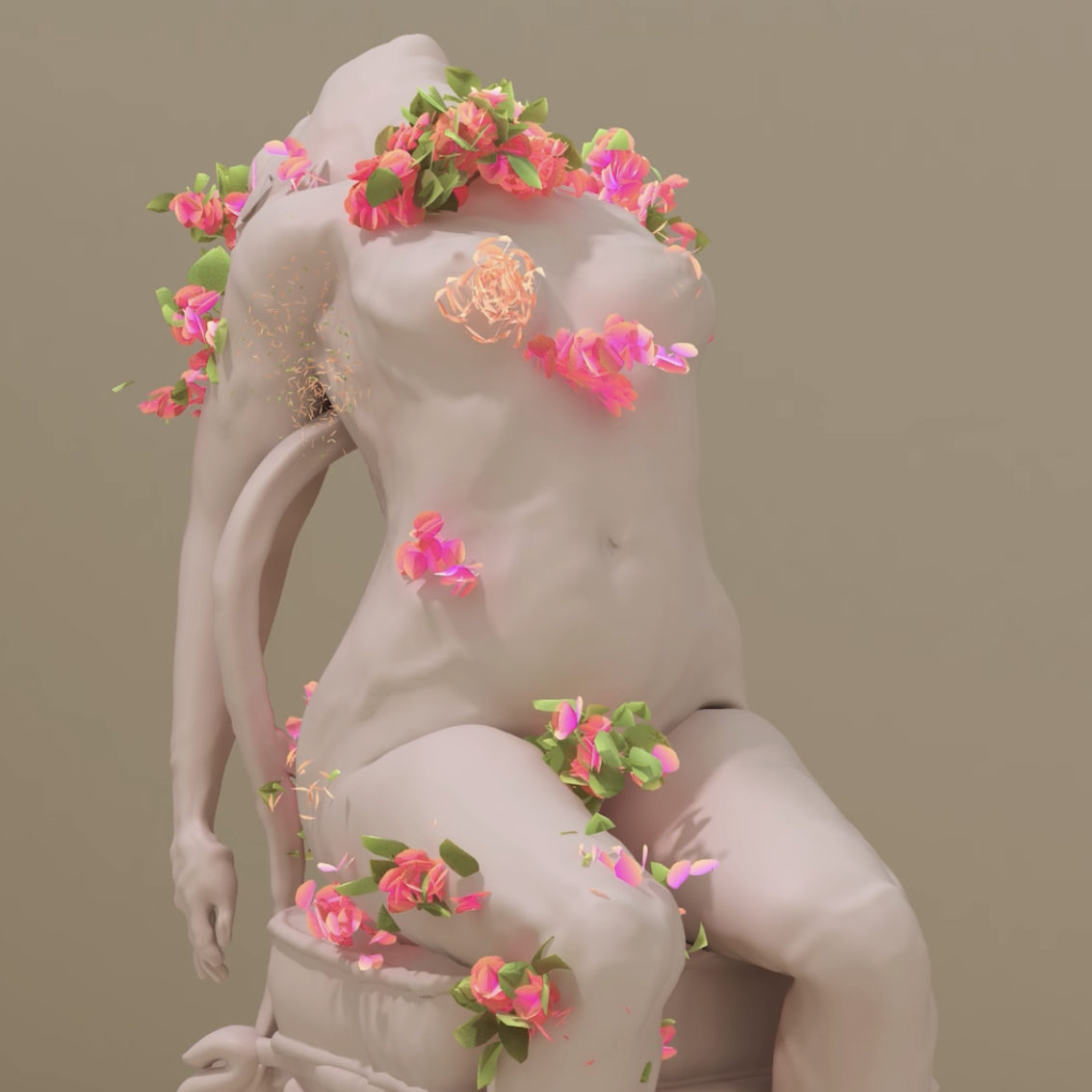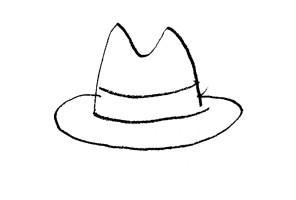Discover, Explore and Collect Exceptional Art
CLAUDIA HART
Claudia Hart leverages simulation technologies to collapse the false binaries between human and avatar, artificial and real, mind and body. Drawing on computing, virtual imaging, and 3D animation technologies, Hart weaves together topics from art history, philosophy, and cultural studies to explore themes of feminism, embodiment, and temporality through a symbolic poetics that stitches onto real world politics.
Recumulations
(Music composed and recorded by Edmund Campion)
2010/2019
3D Animation, MP4 (colour, sound)
9 min 20 sec
1920 x 1080 px
Edition of 3 + 1AP
(CHar004.10)
USD 14,000 (exc. VAT)
In Hart’s Recumulations (2010-2019), a video triptych presents three avatars cast against ambiguous black and white backgrounds. Their movements are jittery and irrational; their bodies move beyond a binary read of race and gender. Created in collaboration with performance artist Roberto Sifuentes, the project reinterprets Judson Dance Theatre co-founder Trisha Brown’s 1971 dance video Accumulations. Its animated choreography gestures at a cyborg poetics of embodiment that overcomes a rational system of movement, merging material bodies and digital avatars in a haptic environment that rejects easy reads of corporeality and the real.
This work is in the collections of the Whitney Museum of American Art, The Julie Walsh, Collection and the Collection of Scott Button
Available: AP is available
Processing History
(Music composed and recorded by Edmund Campion)
2019
3D Animation, MP4 (colour, sound)
7 min
Edition of 3 + 1AP
(CHar002.19)
USD 10,000 (exc. VAT)
Premiering at ANNKA KULTYS PHYGITAL, Processing History (2019) takes an equally destabilizing approach, merging a history of Chicago Modernism with classical architectural motifs, cultural symbols, and digital aging processes. The work subverts a linear read of time by superimposing historical and futuristic imagery upon the stone bodies of two colossal Caryatids: sculpted female figures that serve as an architectural support system of a building, which can be traced from the Ancient Greek temple of Erechtheion to Chicago’s Museum of Science and Industry and Field Museum. A chromatic countdown framing the Caryatids moves both backwards and forewards in time. Set to a staticky, mechanical beat, the video work traces seven decades of cultural history through the Caryatids’ gently morphing forms, which appear to breathe and sway through a hallucinogenic glitch animism.
Production funded by the Terra Foundation, Chicago.
The Swing
(Music composed and produced by Kurt Hentschlager)
2006
3D animation, MP4 (colour, sound)
10 min 11 sec
1920 x 1080 px
Edition of 6 + 1AP
(CHar005.06)
USD 7,000 (exc. VAT)
In the collections of the Borusan Contemporary Collection; the Carl & Marilynn Thoma
Foundation Collection; the Richard and Ellen Sandor Family Collection and various private
collections
The Seasons
2007
3D Animation, MP4 (colour, sound)
11 min 6 sec
1080 x 1920 px
Edition of 6 + 1AP
(CHar001.07)
USD 7,000 (Exc. VAT)
In the collections of the Borusan Contemporary Collection; the Carl & Marilynn Thoma
Foundation Collection; the Lutz Teutloff Photo and Video Collection
Time and its impact on the body emerges as a key theme throughout Hart’s practice; peeling back the decades to The Seasons (2007) and The Swing (2006), we witness two nudes occupying weird temporalities. In the former, time creeps forward in a procession of flowing vines that grow from the melting body of a seated woman. She spins slowly clockwise while the room reels backwards, creating a sense of strung-out time that’s amplified by the scratchy soundtrack of crushing paper.
Dream
(Music composed and recorded by Edmund Campion)
2009
3D Animation, MP4 (colour, sound)
7 min 14 sec
1920 x 1080 px
Edition of 6 + 1AP
(CHar003.09)
USD 7,000 (exc. VAT)
In The Swing, A Rococo-styled 3D avatar of a woman – all blush-pink with rosy cheeks – swings back and forth in the frame, bookended by a pair of trees that slowly shed their leaves. The vibe is melancholic and dilated, conjuring a sense of oblivion that feels peaceful in its certainty. In Dream (2009), the body becomes almost totally dematerialized, floating in a monochromatic, embryonic digital environment that simultaneously recalls x-rays and all of the visceral matter – cells, blood vessels, bodily fluids – that the technology blindsides in its quest to see deeper.
This work is part of the collection of Borusan Contemporary, Istanbul
Timegarden 01
(Sound by Alain Thiebaut)
2004
3D animation, MP4 (colour, sound)
40 min 20 sec
1440 x 960 px
Edition of 3 + 1AP
(CHar006.04)
USD 7,000 (exc. VAT)
More Life
1998
3D Animation, MP4 (colour, sound)
4 sec (looping 30 sec)
1592 x 1080 px
Edition of 2 + 1AP
(CHar007.98)
USD 3,000 (exc. VAT)
Timegarden 01 (2004) and More Life (1998) are perhaps the most extreme in their differing use of time and subjectivity. Part of Hart’s series of “timegardens” – vegetal worlds that use procedural generation to cultivate virtual landscapes calibrated to temporal events in reality – Timegarden 01 runs for 40 minutes: the average amount of time the public spends at an institutional group exhibition. In the first quarter of the video, the garden seeds itself dynamically, rapidly springing into being; for the remaining half-hour, it slowly decays to the sound of gentle pulsations, an echo-y, recursive soundtrack that resembles the subtle sounds plants emit to communicate with each other.
Meanwhile, More Life runs for all of four seconds, the camera panning rapidly in and out of a blocky television stationed in the corner of a lurid green room. On its pixelated screen, a cartoonish pink bear proclaims “I want more life, fucker” – a quote from replicant Roy Batty’s death speech in the 1982 film Blade Runner. Originally premiered in MOMA PS1’s Animations, an early exhibition on CGI art in 2001, More Life underscores Hart’s continued interests in the political salience of the cyborg, as a being that projects excess and challenges ideas of anthropocentricism, and in doing so, counters the techno-progressive, masculine and extractivist dominions of technology.
